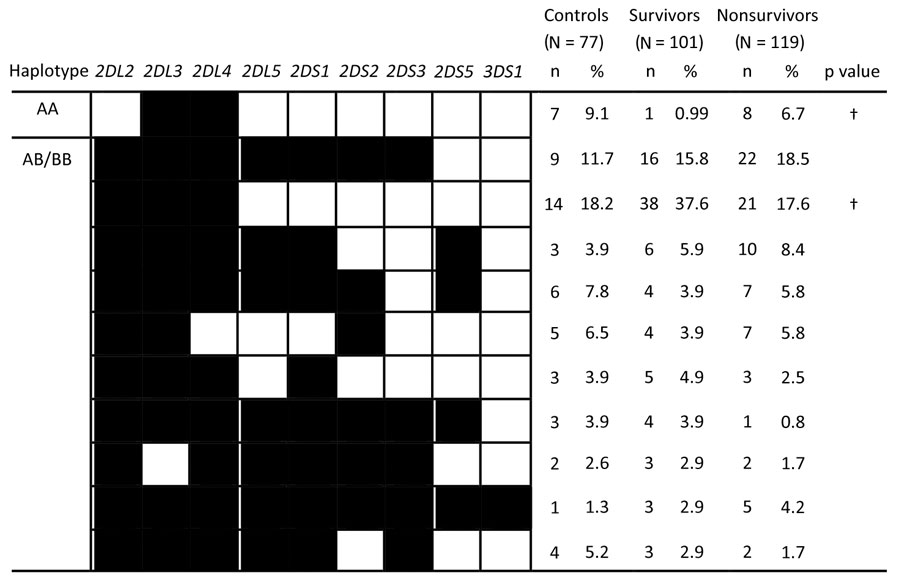Volume 27, Number 1—January 2021
Research
Human Diversity of Killer Cell Immunoglobulin-Like Receptors and Human Leukocyte Antigen Class I Alleles and Ebola Virus Disease Outcomes
Figure 1

Figure 1. Killer cell immunoglobulin-like receptor haplotypes among the control group, Ebola survivors, and persons who died of Ebola virus disease in Guinea, 2015–2017. Percentage of each haplotype was calculated and defined as the number of persons with the killer cell immunoglobulin-like receptor haplotype (n) divided by the number of persons (N) in the studied group. Black boxes indicate presence of genes; white boxes indicate absence of genes. †p<Pc (survivors vs. fatalities). Pc, corrected p value.
Page created: October 16, 2020
Page updated: December 21, 2020
Page reviewed: December 21, 2020
The conclusions, findings, and opinions expressed by authors contributing to this journal do not necessarily reflect the official position of the U.S. Department of Health and Human Services, the Public Health Service, the Centers for Disease Control and Prevention, or the authors' affiliated institutions. Use of trade names is for identification only and does not imply endorsement by any of the groups named above.